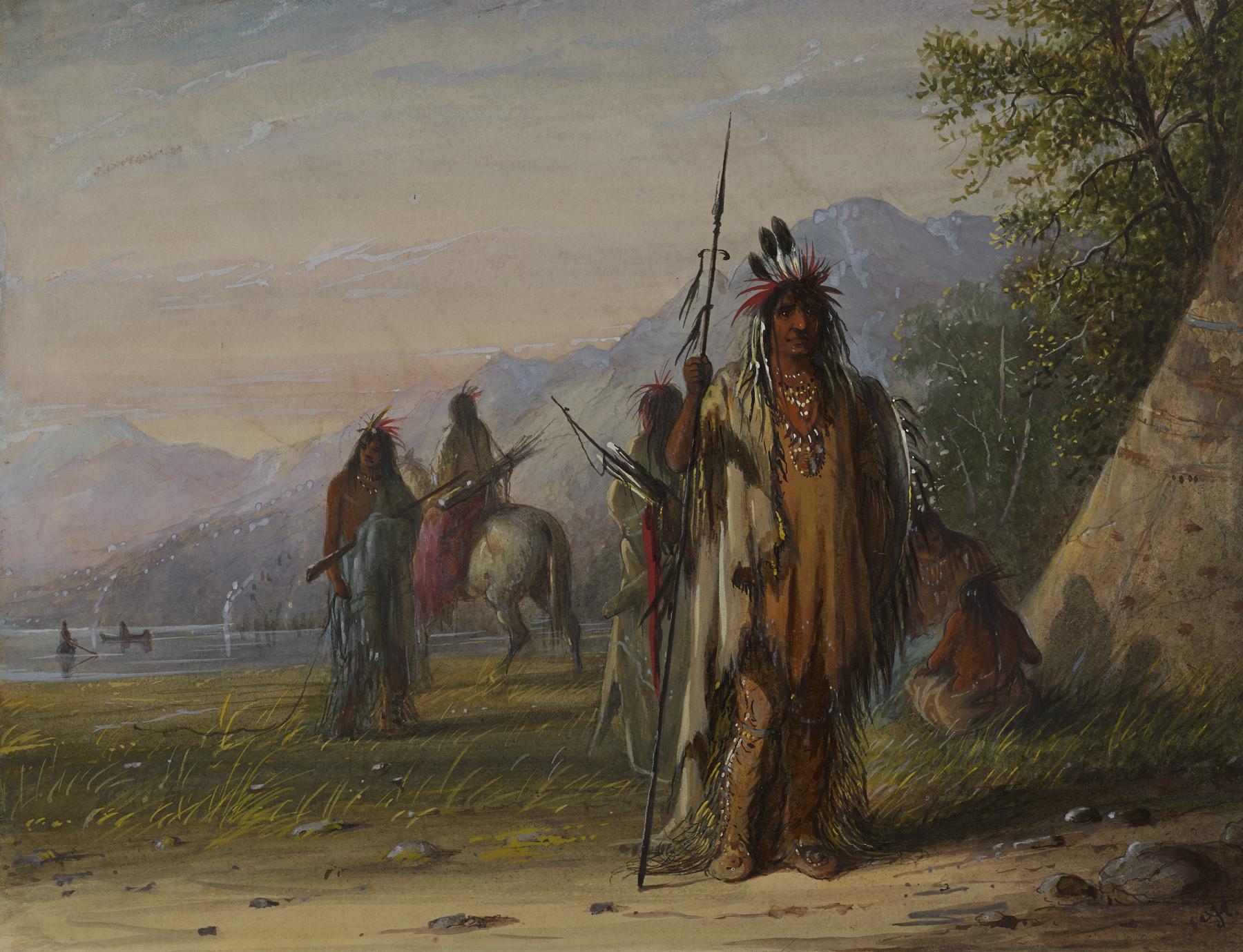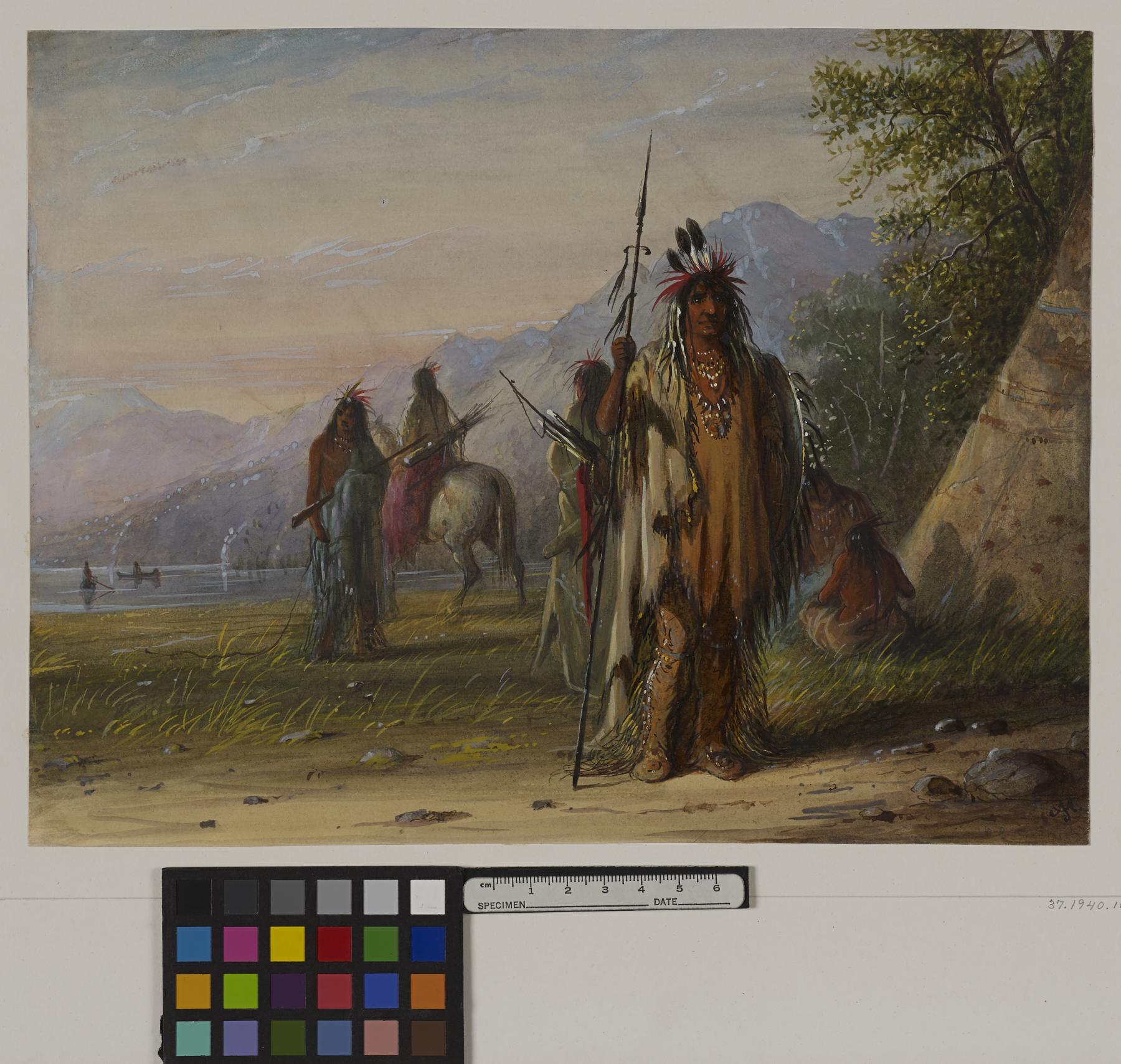Snake Indian Camp
(18th and 19th Centuries )
Extracts from Alfred Jacob Miller’s original text, which accompanied his images of Native Americans, are included below for reference. These words, which shaped how Miller’s contemporaries viewed the watercolors, reveal the racism and sexism embedded in 19th-century exploration and colonization of the western part of what is today the United States.
"In the foreground of the sketch is an Indian en grande parure, armed with a bow, spear & targe,- he takes as much care to dress himself for war as a civilized man for a bridal party or ball. To the right of him is a Lodge near the base of which are represented some blood-red hands, these emblems are significant and are produced by dipping their hands in red ochre, and forming them by pressure. Some fishing canoes are seen in the distance. General Clark (one of the pioneers among the Indians), whom I visited frequently in St. Louis, stated some curious facts as regards the acuteness and sagacity of the Indian that are worth noting. For example, they will start on a journey for over 100 miles, either through forests or over a plain and reach their destination without any material deviation from a straight line; & it will make no difference in the result whether the sun shines or is obscured by clouds. In the same manner they will point out the place of the latter though it may be intercepted by thick clouds or fogs. They will also trace their enemy or game on leaves or grass with such unerring purpose that it is almost impossible that either should escape. Nothing but long experience and great attention, with close observation, could confer on them a power of this kind." A.J. Miller, extracted from "The West of Alfred Jacob Miller" (1837).
In July 1858 William T. Walters commissioned 200 watercolors at twelve dollars apiece from Baltimore born artist Alfred Jacob Miller. These paintings were each accompanied by a descriptive text, and were delivered in installments over the next twenty-one months and ultimately were bound in three albums. Transcriptions of field-sketches drawn during the 1837 expedition that Miller had undertaken to the annual fur-trader's rendezvous in the Green River Valley (in what is now western Wyoming), these watercolors are a unique record of the closing years of the western fur trade.
Provenance
Provenance (from the French provenir, 'to come from/forth') is the chronology of the ownership, custody, or location of a historical object. Learn more about provenance at the Walters.
William T. Walters, Baltimore, 1858-1860, by commission; Henry Walters, Baltimore, 1894, by inheritance; Walters Art Museum, 1931, by bequest.
Geographies
USA (Place of Origin)
Measurements
8 3/4 x 11 7/16 in. (22.2 x 29 cm)
Credit Line
Commissioned by William T. Walters, 1858-1860
Location in Museum
Not on view
Accession Number
In libraries, galleries, museums, and archives, an accession number is a unique identifier assigned to each object in the collection.
In libraries, galleries, museums, and archives, an accession number is a unique identifier assigned to each object in the collection.
37.1940.160







